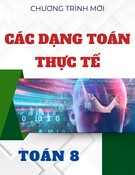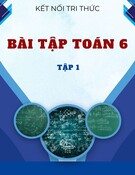A. ignore B. accept C. detect D. produce
Question 25: Which of the following is OPPOSITE in meaning to “identity theft” in paragraph 3?
A. identity protection B. identity increase C. identity mistake D. identity privacy
Question 26: The word “It” in paragraph 4 refers to:
A. TV audiences B. television C. special effects D. the use of AI in TV programs
Question 27: Which of the following can replace the underlined phrase in paragraph 4 "breakthrough in
journalism"?
A. This is an important update in journalism. B. This is a significant change in journalism.
C. This is a major development in journalism. D. This is an important and unexpected issue in journalism.
Question 28: Which of the following is TRUE according to the passage?
A. Television will become more popular with personalized improvements for each user.
B. The information provided can be evaluated by AI to determine the percentage of accuracy and inaccuracy.
C. AI can steal information through facial recognition verification on media platforms like Facebook,...
D. Online media platforms have become safer thanks to AI technology, such as facial recognition.
Question 29: In which paragraph does the author discuss the impacts of AI on journalism?
A. Paragraph 1 B. Paragraph 2 C. Paragraph 3 D. Paragraph 4
Question 30: In which paragraph does the author discuss an opposition or contrast?
A. Paragraph 1 B. Paragraph 2 C. Paragraph 3 D. Paragraph 4
Read the following passage about the urban shift and mark the letter A, B, C or D on your answer
sheet to indicate the best answer to the following questions from 31 to 40.
DEPENDENCE ON TECHNOLOGY: TIME FOR CHANGE!
[I] Los Angeles dancer, Brian Perez, was eating out with his friends one evening when suddenly
everyone went quiet. [II] To his horror, he saw that the reason for this was that people were checking their
phones. [III] What if they all put their gadgets in a pile in the middle of the table until they had finished the
meal? [IV] If anyone picked up their phone, that person would have to pay the whole bill. And so, it is
said, the game of 'phone stacking' was born.
The necessity for action like this highlights a major problem in today's society: our inability to
disconnect from technology. But while Brian's idea deals with the obsession in a social context, measures
also need to be taken at home. Some people drop their smartphones into a box the moment they arrive
home, which gives them the chance to interact with the people they live with. The fact that the phone
cannot be heard - it is on silent - nor seen - the flashing lights are hidden by the box - means that they are
no longer tempted to use it.
A less drastic solution is to ban electronic devices at certain times of day when the whole family is
likely to be together, for example at meal times. This can be hard for everyone, from teenagers desperate to
text friends to parents unable to switch off from work. On a normal day, however, dinner takes less than an
hour, and the benefits of exchanging opinions and anecdotes with the rest of the family certainly
makes up for the time spent offline.
Taking a break from technology is one thing, but knowing when to turn off a device is another.
Time seems to stand still in the virtual world, and before you know it, you find that it is three o'clock in the
morning. This is where a digital curfew comes in handy, a set time when all devices must be put away.
Evenings without technology are usually nice and peaceful and make a more agreeable end to the day. And
then it's time for bed. One of the best ways of ensuring you can sleep at night is to ban electronic devices
altogether from the bedroom. Lying next to a machine bursting with information is far from relaxing, and
the sounds it emits during the night can easily wake you up. With technology out of the room, a line has
been drawn between daytime and sleep time, which enables us to switch off ourselves and drift off to
sleep.
Question 31. Where in paragraph I does the following sentence best fit?
Realising he had to do something to stop this, Brian made a rather daring suggestion.
A. [I] B. [II] C. [III] D. [IV]
Question 32. The phrase "the necessity for action" in paragraph II could be best replaced by .
A. the requirement for change B. the importance of communication
C. the need for technology D. the demand for connection
5









































